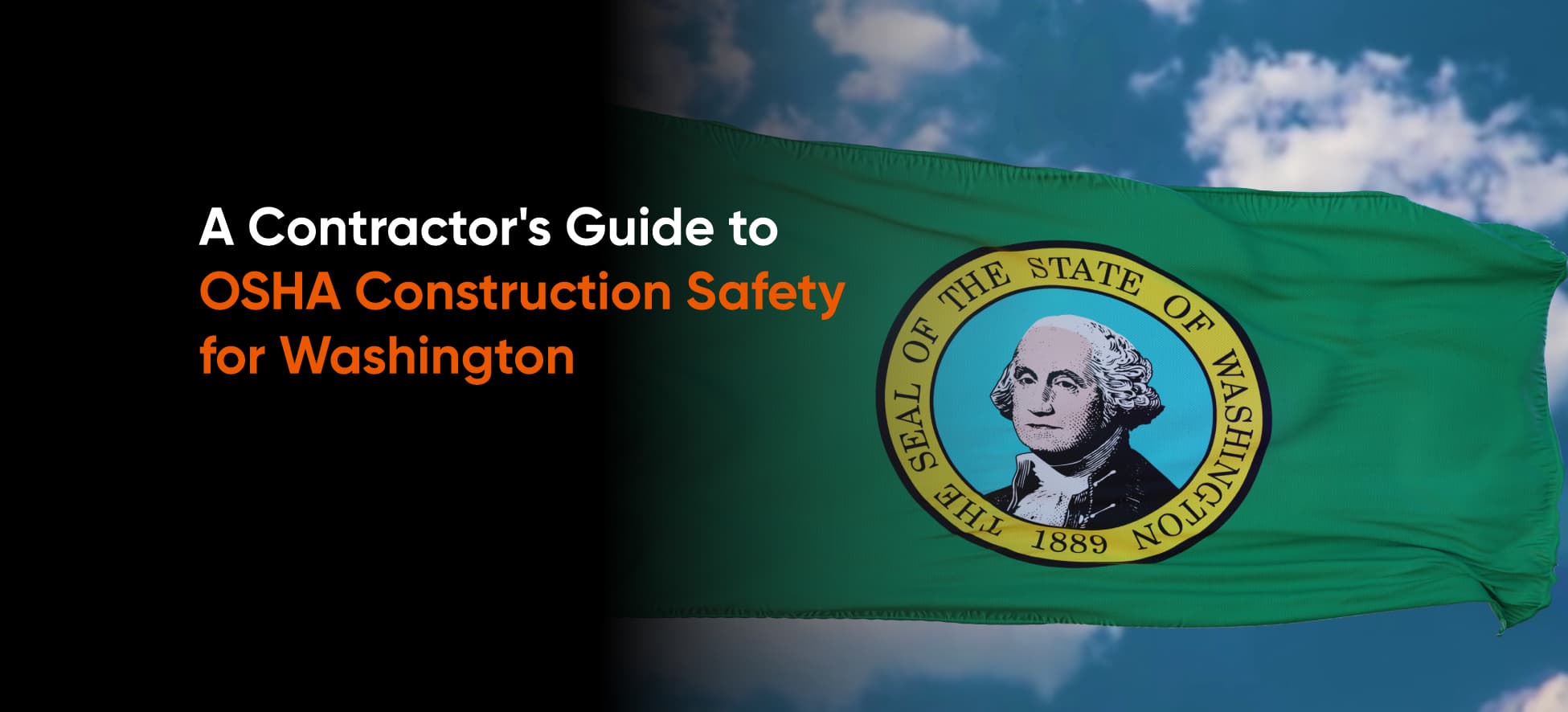In the construction industry, safety is paramount. Thus, the Occupational Safety and Health Administration (OSHA) has established guidelines and regulations to protect workers and ensure a safe work environment. This guide provides an overview of OSHA construction safety regulations in Washington, highlighting essential information for contractors to promote and maintain a safe work environment.

OSHA Jurisdiction and Washington State Plan
OSHA is a federal agency that regulates and enforces standards to ensure safe and healthy working conditions. In Washington, the state has adopted an OSHA-approved State Plan, which covers all state and local government workers and most private sector workers. In addition, the Washington State Department of Labor & Industries (L&I) administers the Washington Industrial Safety and Health Act (WISHA), which mirrors federal OSHA regulations while addressing state-specific concerns. Contractors in Washington must comply with WISHA standards and be aware of any additional state requirements.
Key OSHA Construction Safety Standards
- Fall Protection (29 CFR 1926.501)
Falls are the leading cause of construction worker fatalities. Therefore, OSHA requires contractors to provide fall protection for employees working at elevation of six feet or more above a lower level. Fall protection includes guardrails, net safety, or personal fall arrest systems. Choosing the appropriate fall protection system based on the specific task and work environment is essential.
- Scaffolding (29 CFR 1926.451)
Scaffolding is a standard feature on construction sites and must be erected, maintained, and dismantled safely to prevent accidents. OSHA requires scaffolding to be designed by a qualified person and constructed according to the design. Additionally, the scaffolding must support its weight plus four times the maximum estimated load without settling or displacement. Finally, employees working on or near scaffolding must receive proper training and utilize appropriate fall protection measures.
- Ladders (29 CFR 1926.1053)
Ladders are another common source of construction site accidents. OSHA has established guidelines for ladder use, including ensuring that ladders are in good condition, correctly set up, and used only for their designed purpose. In addition, contractors must ensure that employees are trained in ladder safety, and that defective ladders are removed from service.
- Electrical safety (29 CFR 1926 Subpart K)
Construction sites often involve electrical hazards, leading to electrocutions, burns, and other serious injuries. Therefore, OSHA requires contractors to follow electrical safety standards, including grounding electrical equipment, properly using extension cords, and guarding electrical parts. Additionally, employees must be trained in electrical safety and supplied with suitable personal protective equipment (PPE).

- Recordkeeping and Reporting
Contractors must maintain records of work-related injuries and illnesses, as well as severe report incidents to OSHA or L&I. OSHA Form 300 (Log of Work-Related Injuries and Illnesses), Form 300A (Summary of Work-Related Injuries and Illnesses), and Form 301 (Injury and Illness Incident Report) are used for recordkeeping purposes. In addition, contractors must report fatalities, in-patient hospitalizations, amputations, or loss of an eye to OSHA or L&I within 8 hours of learning about the incident.
- Employee Training and Communication
Contractors are responsible for providing employees with proper safety training and ensuring they understand OSHA regulations. Training should be tailored to the specific tasks and potential hazards workers face on the job site. Safety meetings or toolbox talks should reinforce safety practices and address concerns regularly.
- Inspections and Enforcement
OSHA and L&I conduct regular construction site inspections to ensure safety regulations compliance.
- Personal Protective Equipment (PPE) (29 CFR 1926 Subpart E)
PPE is essential in minimizing the risk of injuries and illnesses on construction sites. Contractors must provide appropriate PPE to employees, such as hard hats, safety glasses, hearing protection, high-visibility clothing, gloves, and safety footwear. Employers are responsible for ensuring that workers wear PPE when required and that it fits properly. Contractors should also conduct periodic inspections of PPE to ensure it remains in good condition.
- Hazard Communication (29 CFR 1926.59)
Contractors must inform employees about hazardous chemicals present at the worksite, including maintaining a written hazard communication program, properly labeling containers, providing safety data sheets (SDS) for all dangerous chemicals, and training employees to handle and store these substances safely. In addition, regular reviews of the hazard communication program are necessary to ensure it remains current.
- Trenching and Excavation Safety (29 CFR 1926 Subpart P)
Trenching and excavation work can be exceedingly hazardous due to the risk of cave-ins, falls, and hazardous atmospheres. Depending on the excavation depth and soil type, contractors must ensure that protective systems are in place, such as shoring, shielding, or sloping. Additionally, regular inspections of trenches and excavations are necessary to identify and address potential hazards. Employees must also receive training in trenching and excavation safety.
- Crane and Rigging Safety (29 CFR 1926 Subpart CC)
Cranes and rigging equipment are critical in many construction projects but can pose significant risks if not used and maintained correctly. Contractors must ensure that operators are adequately trained and certified and that cranes and rigging equipment are inspected and maintained regularly. Proper planning and communication are crucial to ensure loads are moved safely and efficiently.
- Emergency Preparedness and Response (29 CFR 1926.35)
Contractors must have an emergency action plan to address potential emergencies, such as fires, severe weather, or hazardous material spills. The plan should include procedures for reporting emergencies, evacuation routes, and assembly areas. Employees should receive training on the emergency action plan, and drills should be conducted regularly to ensure everyone acknowledges their role in the event of an emergency.

Conclusion
Compliance with OSHA construction safety regulations is not only a legal requirement for contractors in Washington but also a vital aspect of ensuring the well-being of employees and preventing accidents. By understanding and implementing OSHA standards, contractors can maintain a safe work environment, reduce the risk of injuries and fatalities, and improve overall productivity. Moreover, continuous training, open communication, and regular inspections are critical to maintaining a strong safety culture on construction sites.

